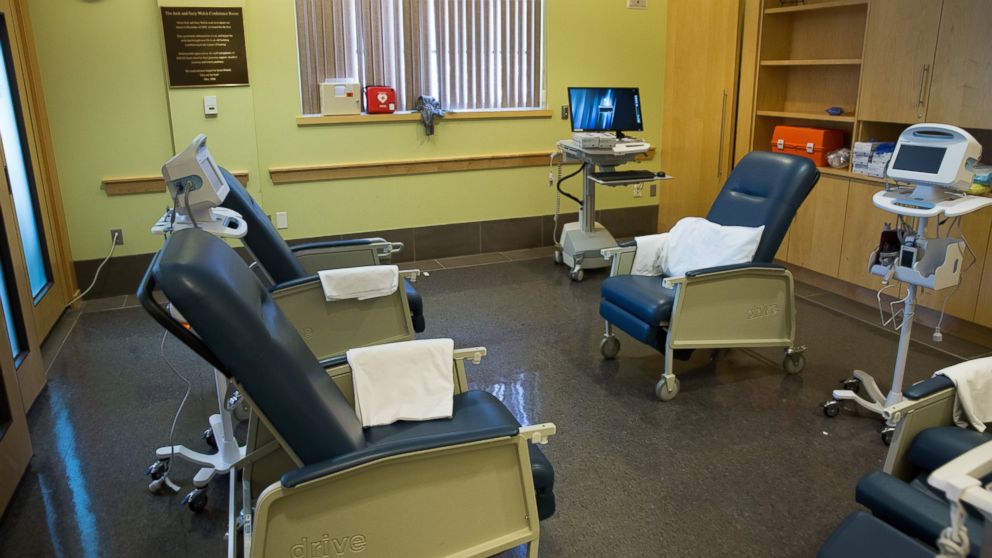Safe Space for Opioid Users Reveals Changing Views on Addiction
More health officials are working on "middle ground" to save addicts.

— -- A Boston homeless center has started a new program allowing people who use opioids to be in a safe space where they can be supervised after taking the drugs. The program joins a growing number of places which aim to use "harm reduction" strategies -- leading people toward treatment and reducing the risk of overdose -- in the difficult fight against a rapidly growing opioid epidemic.
Last month, the Boston Healthcare for The Homeless Program (BHCHP) started their initiative called Supportive Place for Observation and Treatment (SPOT) where people in the midst of an opioid high can go for support. Up to eight people will be allowed in the space at a time and they will be closely monitored by officials on site so that they don't overdose.
"Currently, we are responding to 2-5 overdoses at our main site each week, and our lobby and clinic waiting room are already places where people rest safely in the midst of recent use of substances," the center wrote in a recent statement on their site. "The street corners nearby are similarly filled with people who are also at high risk of overdose, and who may not be engaged with providers of health care or addiction services."
"SPOT is one part of our larger response to lessen the impact of the opioid crisis on our patients, staff and the neighborhood," officials from BHCHP said in a statement, adding that deaths from suspected opioid overdoses have increased by 50 percent, between 2014 and 2015, in Boston.
As overdose deaths have increased dramatically in recent years, mostly attributed to an epidemic of prescription painkiller addictions that can lead to intravenous heroin use, some health officials have advocated for simply reducing the immediate dangers for addicts.
In Ithaca, New York Mayor Svante Myrick has proposed a major initiative aimed at combating the opioid epidemic and hopes to open a supervised injection site -- an option that currently exists in other countries, but not in the U.S. -- so that addicts can use drugs in a safe space, to help diminish overdose cases and transmission of HIV or hepatitis through intravenous drug use. Seattle is considering a similar space.
Daniel Raymond, Policy Director at the Harm Reduction Coalition, said the spike in opioid drug use in recent years has lead to a major change in how some public health officials approach drug policy.
"A lot of these proposals reflect the state of crisis we’re in," said Raymond. "The distinct thing with opioids and heroin is the immediate risk of overdose, the lethality. We’ve got the highest overdose numbers in the country that the CDC has ever seen."
He pointed out that federal money is currently allocated to one of the early forms of harm reduction: needle exchange programs. These programs provide clean needles to drug users to cut down on HIV and other diseases transmitted through dirty needles. Many of these programs have informal policies to monitor addicts who are using drugs, as way to safeguard their health.
The changes at sites across the country, Raymond added, show an overall acknowledgement that more services need to be provided to people who are not yet fully sober or are looking for help to stop their drug use.
"As we learn more about addiction and treatment there’s a greater recognition that it’s not a magic bullet," said Raymond. "Treatment is important and not magic."
"We’ve got to something for people in the middle, that's the space that harm reduction occupies," he added.
Since 1999, the rate of overdose deaths involving opioids (including prescription opioids and heroin) almost quadrupled, with 78 Americans dying every day from an opioid overdose, according to the CDC.
Earlier this year, President Barack Obama proposed $1 billion to expand access to treatment for prescription and heroin use.




